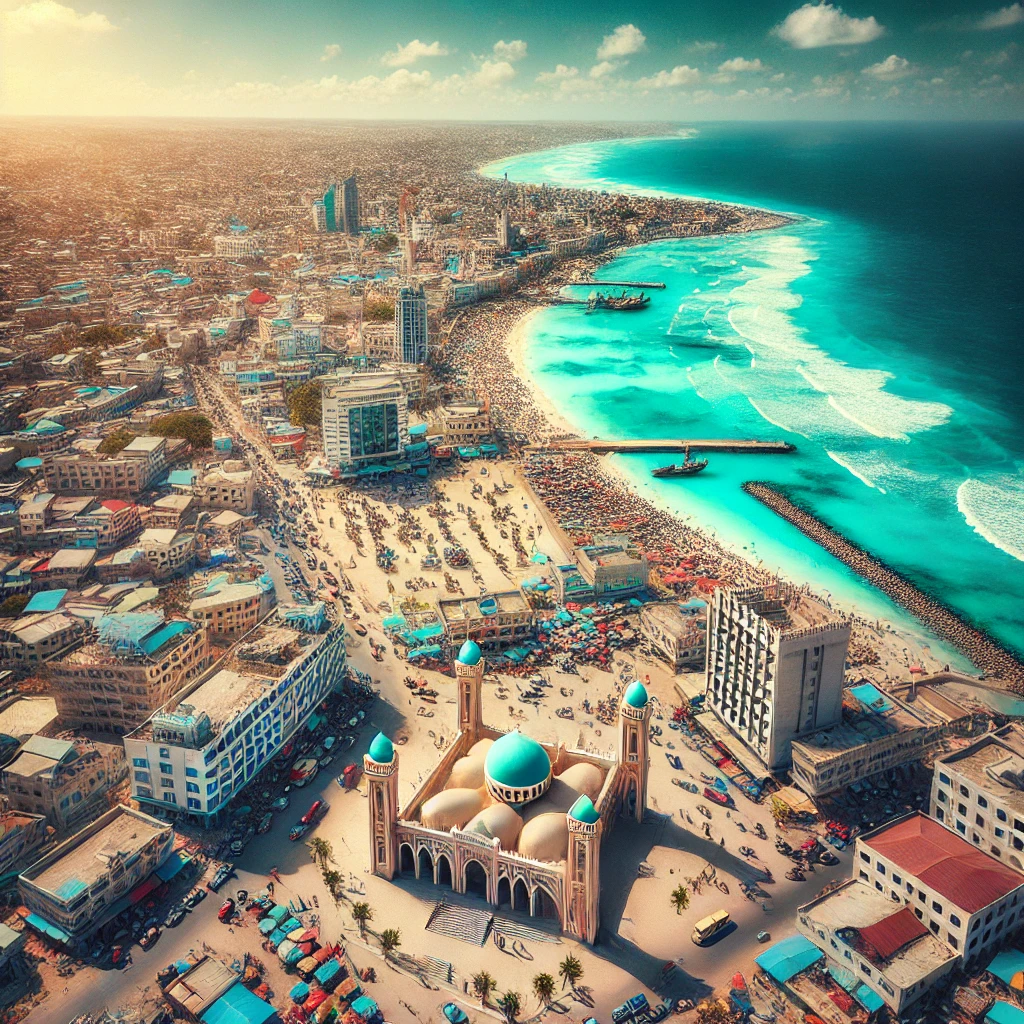Mogadishu Stadium, located in the heart of Somalia’s capital, stands as an enduring symbol of national pride, resilience, and the unifying power of sports. As one of the largest and most iconic sports venues in East Africa, the stadium has played a pivotal role in Somali history, not only as a hub for athletic competitions but also as a cultural and political landmark. Over the years, it has witnessed moments of triumph, endured periods of strife, and emerged as a beacon of hope for the Somali people.
The Construction and Early Years
Mogadishu Stadium was constructed in 1978 during the presidency of Siad Barre, with assistance from the Chinese government. Designed to accommodate up to 35,000 spectators, the stadium was a testament to Somalia’s ambition to develop its sports infrastructure and promote unity through athletic endeavors. Its construction marked a significant milestone in the country’s post-independence era, symbolizing progress and modernization.
In its early years, the stadium hosted a wide array of events, including football matches, athletics competitions, and cultural performances. It quickly became a focal point for national celebrations and a gathering place for the Somali community. The vibrant atmosphere during these events highlighted the country’s rich cultural heritage and the unifying power of sports.
A Hub for Somali Football
Football has always been a beloved sport in Somalia, and Mogadishu Stadium served as the epicenter of the nation’s football activities. The stadium was home to the Somali national football team known as the Ocean Stars and hosted numerous domestic league matches. For Somali football fans, Mogadishu Stadium was more than just a venue; it was a symbol of national pride and a place where dreams were born.
The Somali Football Federation (SFF) frequently organized tournaments and matches at the stadium, attracting teams from across the country. These events not only showcased local talent but also fostered a sense of unity among Somali regions. The chants, cheers, and celebrations that filled the air during these matches created unforgettable memories for players and fans alike.
Challenges and Decline
The outbreak of civil war in Somalia in the early 1990s marked a dark period for Mogadishu Stadium. As the country descended into conflict, the stadium’s role as a sports venue was overshadowed by its use for military and political purposes. Armed groups occupied the stadium, converting it into a base for operations. The once vibrant hub of sports and culture became a symbol of the nation’s turmoil.
During this period, the stadium suffered extensive damage, with its infrastructure deteriorating due to neglect and misuse. The pitch that had once hosted thrilling matches was left barren, and the stands that had echoed with cheers were abandoned. For decades, Mogadishu Stadium stood as a stark reminder of the challenges faced by the Somali people.
Revival and Restoration of Mogadishu Stadium
In recent years, efforts to restore Mogadishu Stadium have gained momentum, reflecting the broader recovery and rebuilding process in Somalia. Recognizing the stadium’s significance as a symbol of hope and resilience, the Somali government, in collaboration with international partners, launched initiatives to rehabilitate the venue.
In 2020, the stadium reopened its doors after extensive renovations funded by the Somali government and supported by FIFA. The restoration project focused on repairing the pitch, upgrading seating facilities, and enhancing security measures. The reopening of Mogadishu Stadium was celebrated as a milestone in Somalia’s journey toward peace and stability.
Today, the stadium once again hosts football matches, athletic competitions, and cultural events, rekindling the spirit of unity and pride among Somalis. The revival of Mogadishu Stadium has also inspired a new generation of athletes, providing them with a platform to showcase their talent and pursue their dreams.
Mogadishu Stadium’s Cultural and Social Impact
Beyond sports, Mogadishu Stadium has played a significant role in shaping Somali culture and society. The venue has served as a stage for cultural festivals, music concerts, and national celebrations. These events have brought people together, fostering a sense of community and shared identity.
The stadium’s significance extends beyond its physical structure. It represents the resilience of the Somali people and their determination to rebuild their nation. For many, Mogadishu Stadium is a symbol of hope, a reminder that even in the face of adversity, unity and perseverance can pave the way for a brighter future.
The Role of Sports in Nation-Building
The revival of Mogadishu Stadium underscores the importance of sports in nation-building. In Somalia, sports have served as a powerful tool for promoting peace, reconciliation, and social cohesion. Football, in particular, has the unique ability to transcend political and cultural divisions, bringing people together under a shared passion.
The stadium’s restoration has also provided economic opportunities for the local community. From vendors selling snacks and merchandise during matches to jobs created through maintenance and event management, Mogadishu Stadium has become a source of livelihood for many.
Furthermore, the stadium has inspired initiatives aimed at nurturing young talent and promoting grassroots sports. Youth programs and training camps organized at the stadium provide aspiring athletes with the resources and support needed to excel in their chosen sports. These efforts contribute to the development of Somalia’s sports ecosystem and empower the next generation of Somali athletes.
Mogadishu Stadium in the Global Context
The revival of Mogadishu Stadium has garnered attention beyond Somalia’s borders, highlighting the country’s progress and potential. The stadium has hosted international matches, drawing teams and spectators from neighboring countries. These events not only promote Somalia as a destination for sports tourism but also strengthen regional ties and foster a spirit of camaraderie among nations.
The Somali diaspora has also played a crucial role in supporting the stadium’s revival. Through financial contributions, advocacy, and participation in events, the diaspora community has demonstrated its commitment to the development of Somali sports and culture. Their involvement underscores the global significance of Mogadishu Stadium as a unifying symbol for Somalis worldwide.
Challenges and Opportunities Ahead
While Mogadishu Stadium’s revival is a testament to Somalia’s resilience, challenges remain. Ensuring the sustainability of the stadium’s operations requires continued investment in maintenance, security, and infrastructure. Addressing these challenges is essential to preserving the stadium’s role as a hub for sports and culture.
At the same time, the opportunities for Mogadishu Stadium are immense. With its rich history and iconic status, the stadium has the potential to become a landmark of international significance. Hosting regional and international tournaments, cultural festivals, and other large-scale events could further elevate the stadium’s profile and contribute to Somalia’s economic growth.
A Bright Future for Mogadishu Stadium
Mogadishu Stadium’s journey from a symbol of conflict to a beacon of hope reflects the resilience and determination of the Somali people. As the stadium continues to host events that inspire and unite, it stands as a testament to the power of sports and culture in shaping a nation’s identity and future.
For Somalis, Mogadishu Stadium is more than just a venue; it is a source of pride and a reminder of the possibilities that lie ahead. As the country continues to rebuild and progress, Mogadishu Stadium will undoubtedly remain at the heart of Somalia’s journey toward peace, unity, and prosperity.
This article highlights Mogadishu Stadium’s historical significance, challenges, and revival while emphasizing its role in Somali sports and culture. Let me know if there’s anything you’d like to add or adjust!



